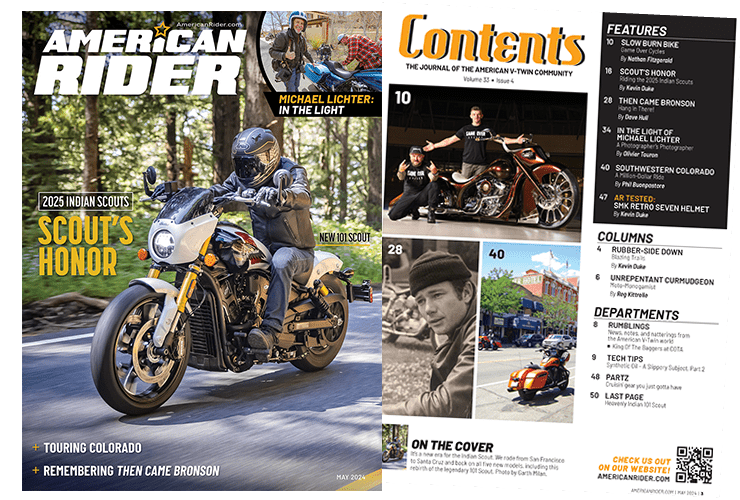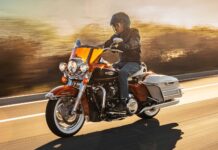In the December issue we skipped a mental rock across the mystic river of muffler design. And two elements became clear. One, that many of us want the sound and could care less if power – let alone access to it – is improved. Real performance enthusiasts, on the other hand, find that more performance without more sound is much more elusive.
Two things to keep in mind here: Torque is measured, whereas horsepower is calculated. My favorite example is two half-horsepower electric motors, one from a drill and one from a clothes washer. Grab the drill by the chuck and pull the trigger, and the drill motor won’t budge. Do the same with the shaft of a washer motor and it’ll snap your wrist. This is because the nature of the torque provided by the two motors is completely different, even though power is rated the same. More to the point, the washer motor ‘dumps’ all its torque immediately, while the drill makes so little at low speed it can’t even spin while restrained.
The difference? Access time!
‘Access time’ is a term computer folks are intimately familiar with, and for good reason. In our time, light speed data grabbing, instant gratification and near-instant reaction and results are the bedrock of technology. That includes motorcycles. Most modifications and performance upgrades are aimed at the goal of increasing the power available from any given configuration and displacement – electric motors included. Most of that has to do with torque production. Substantial increases are difficult, expensive and involved, and performed without much regard to access time.
What’s news here is that faster access time can be had easily, even if power increases can’t.
Some years back I saw two dyno charts mapping power for a Sportster and a VR1000 race bike. The Sporty produced about half the power of the VR, but torque production was close between the two. Looking at it, it seemed obvious the VR would kill the Sportster. Then it happened. The two charts were shown again, but this time indicating the time it took each bike to access its available torque – and, therefore, power. The Sportster killed the VR! How does a 75-horse Sporty knock off a 145-hp race bike in acceleration? Well, the VR1000 was geared to make 145 hp at 180 mph and the Sporty was geared to make peak power at less than 100 mph. There’s part of it.
The other part, the part we’re talking about now, is that the Sportster could reach peak torque in about four seconds and peak horsepower in about six. The VR1000 took longer – for both. Apples and oranges? More like horns and howitzers. The VR also had to meet the noise requirements of the racetrack. The Sportster in question was using a massive, open-pipe ear-splitter. Differences in exhaust efficiency translated into huge differences in access time.

Let me lay that out differently. All else being equal, two machines with 90 hp but one with effective exhaust from the header back (and accessing the available power more quickly) is gonna whomp the other in roll-ons and any other acceleration contest that involves revving through a gear. It gets better.
If you read last month’s column (check americanrider.com if not) you know you can beat the performance of an open pipe yet comply with noise requirements at the same time. Best of both worlds. All it takes is really large mufflers and good baffles.
Hereabouts you’ll see a graphic of some tests done by Cone Engineering. They were performed on an 865cc Bonneville Triumph but hold true for any engine. If you study them closely, it’s evident that proper muffler/baffle combos have a beneficial effect on how long it takes to reach the horsepower available – however much there is. What’s perhaps less obvious is how much difference the same power achieved in less time can make on the street. Almost 20 percent less time to reach 40 horsepower means almost 20 percent farther down the road than the other guy. Compounded by another near-20-percent advantage to 64 hp … well, you get the picture.
If you have any tech tips or questions or unsolvable motorcycle mysteries, email motorhead@thunderpress.net.



















